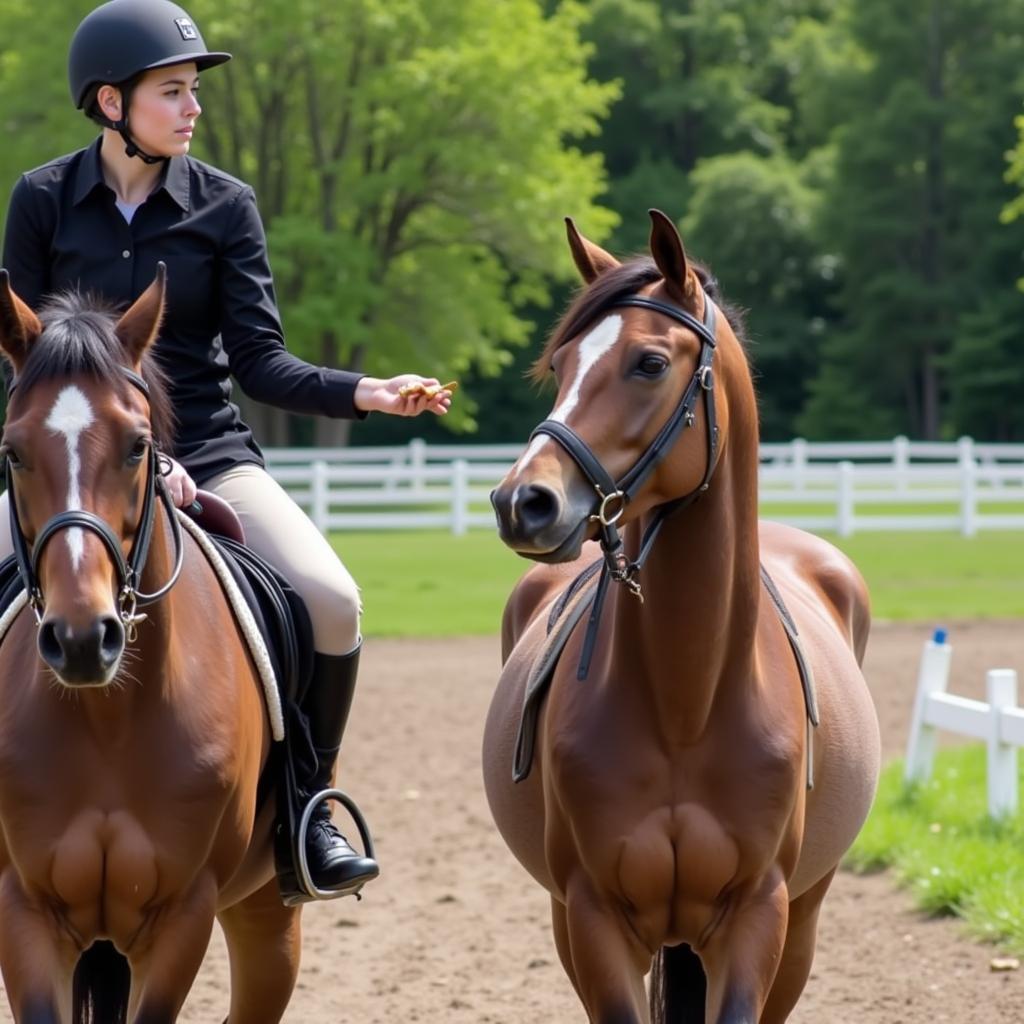“Bad Horse Tone City” – a phrase that evokes images of unruly equines and frustrated riders. But what does it really mean? This article delves into the complexities of equine communication, exploring the nuances of body language and behavior that often get labeled as “bad.” We’ll uncover the reasons behind these behaviors, offering practical advice for improving horse-human relationships and creating a more harmonious partnership.
What Does “Bad Horse Tone City” Actually Mean?
The term “bad horse tone city” isn’t a clinical diagnosis but rather a colloquial expression used to describe a horse exhibiting a cluster of undesirable behaviors. These can range from subtle signs like pinned ears and a swishing tail to more overt displays such as bucking, rearing, or bolting. It signifies a general lack of cooperation and a tense, negative atmosphere during handling or riding. Understanding the root causes of these behaviors is crucial to addressing them effectively.
Common Causes of “Bad Horse Tone City”
Several factors can contribute to a horse displaying what some might call “bad” behavior. Pain and discomfort are often overlooked culprits. An ill-fitting saddle, dental issues, or underlying lameness can manifest as irritability and resistance.
- Physical Discomfort: A horse experiencing pain might express it through various behaviors often misinterpreted as “bad attitude.”
- Lack of Clear Communication: Horses communicate primarily through body language. Misunderstandings between horse and human can lead to frustration and resistance.
- Inconsistent Training: Inconsistent cues and reinforcement can confuse a horse, leading to unpredictable behavior.
- Fear and Anxiety: A frightened or anxious horse may react defensively, exhibiting behaviors perceived as “bad.”
- Boredom and Lack of Stimulation: Horses are intelligent animals and require mental and physical stimulation. Boredom can lead to unwanted behaviors.
- Nutritional Imbalances: Deficiencies in certain nutrients can affect a horse’s mood and behavior.
Addressing “Bad Horse Tone City”: A Holistic Approach
Resolving “bad horse tone city” requires a comprehensive approach that addresses both the horse’s physical and emotional well-being.
Rule Out Physical Issues
The first step is to rule out any underlying physical problems. A thorough veterinary check-up, including dental and lameness exams, is essential. Ensuring a properly fitting saddle and tack is also crucial.
Clear and Consistent Communication
Effective communication is the cornerstone of a positive horse-human relationship. Learn to understand equine body language and use clear, consistent cues. Avoid mixed signals and harsh corrections. Positive reinforcement, such as praise and rewards, is far more effective than punishment.
Tailored Training Program
A well-structured training program that caters to the horse’s individual needs and temperament is essential. Introduce new concepts gradually and build upon previous learning. Keep training sessions short, focused, and engaging to prevent boredom.
 Horse and Rider Training with Positive Reinforcement
Horse and Rider Training with Positive Reinforcement
Enrichment and Stimulation
Provide ample opportunities for mental and physical stimulation. Turnout with other horses, varied terrain, toys, and puzzle feeders can help alleviate boredom and promote a more positive demeanor.
Nutritional Considerations
A balanced diet is essential for overall health and well-being. Consult with a veterinarian or equine nutritionist to ensure your horse’s dietary needs are met.
Expert Insights
Dr. Emily Carter, DVM, a renowned equine veterinarian, emphasizes the importance of a holistic approach: “Addressing ‘bad horse tone city’ requires looking at the whole picture. Often, what appears as behavioral issues stems from underlying physical discomfort or unmet needs. A thorough assessment and a compassionate approach are key to resolving these challenges.”
Beyond “Bad”: Building a Better Partnership
“Bad horse tone city” shouldn’t be a label we attach to our equine partners. It’s a call to understand them better. By addressing their physical and emotional needs, focusing on clear communication, and providing a stimulating environment, we can transform “bad horse tone city” into a thriving partnership built on mutual respect and understanding.
Conclusion
“Bad horse tone city” is a signal, not a sentence. By understanding the underlying causes of undesirable behaviors and implementing a holistic approach to training and care, we can foster a positive and rewarding relationship with our equine companions. Remember, a “bad” horse is often just a horse trying to communicate its needs in the only way it knows how.
FAQs
- What are the first signs of “bad horse tone city”?
- How can I tell if my horse is in pain?
- What are some effective positive reinforcement techniques for horse training?
- How much turnout does a horse need?
- What are some signs of boredom in horses?
- Can nutritional deficiencies affect a horse’s behavior?
- How can I improve communication with my horse?
Related Articles
- Understanding Equine Body Language
- Creating a Positive Training Environment
- Equine Nutrition: Feeding for Optimal Health and Performance
Need help with your horse? Contact us! Phone: 0772127271, Email: [email protected] or visit us at QGM2+WX2, Vị Trung, Vị Thuỷ, Hậu Giang, Việt Nam. Our customer care team is available 24/7.